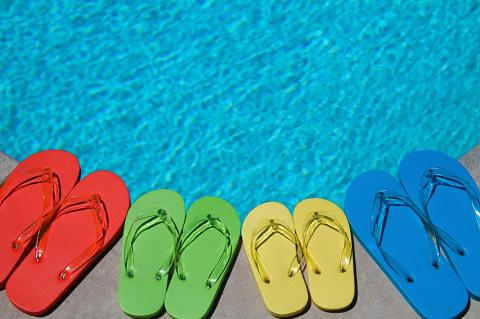What Does a Podiatrist Say About Flip-Flops?
Dr. Szabo recommends the following guidelines to help avoid a flip-flop mishap.
Flip-flop Dos
Do shop for a flip-flop made with thick cushioned soles and neoprene rubber upper area. Neoprene rubber is wetsuit-like material and minimizes the potential for blisters and other types of irritation.
Do make sure the flip-flop has some raised arch support. This will help distribute pressure more evenly.
Do ensure that your foot doesn’t hang off of the edge of the flip-flop.
Do wear a sturdy pair of flip-flops when walking around a public pool, at the beach, in hotel rooms and in locker room areas. Walking barefoot can expose foot soles to plantar warts and athlete’s foot.
Do wear sunscreen. It’s important to keep all exposed skin protected from the sun’s harmful rays. After all, sunburned feet can make walking miserable for days.
Flip-flop Don’ts
Don’t rewear flip-flops year after year. Inspect older pairs for wear. If they show signs of severe wear, discard them.
Don’t ignore irritation between toes, where the toe thong fits. This can lead to blisters and possible infections.
Don’t wear flip-flops while walking long distances. Even the sturdiest flip-flops offer little in terms of shock absorption and arch support. If you must wear something with open toes, a supportive, well-balanced sandal with a heel strap is preferable for walking distances.
Don’t do yard work or play sports while wearing flip-flops. Always wear a shoe that fully protects feet when doing outside activities, or you could be more susceptible to accidents and injuries.
Finally, Dr. Szabo advises, look for flip-flops that are a name brand you trust. If you are unaware of what makes a good flip-flop, go to an athletic specialty store, hiking store, or running store, and ask their staff for recommendations based on your specified use. These professionals are generally very knowledgeable and can guide you in selecting the right footwear.
Source: Augusta University (formerly Georgia Regents University)
The information in this article is not meant to replace your doctor’s advice. If you have mobility issues, foot problems or impaired balance, talk about footwear that is safe for you.
